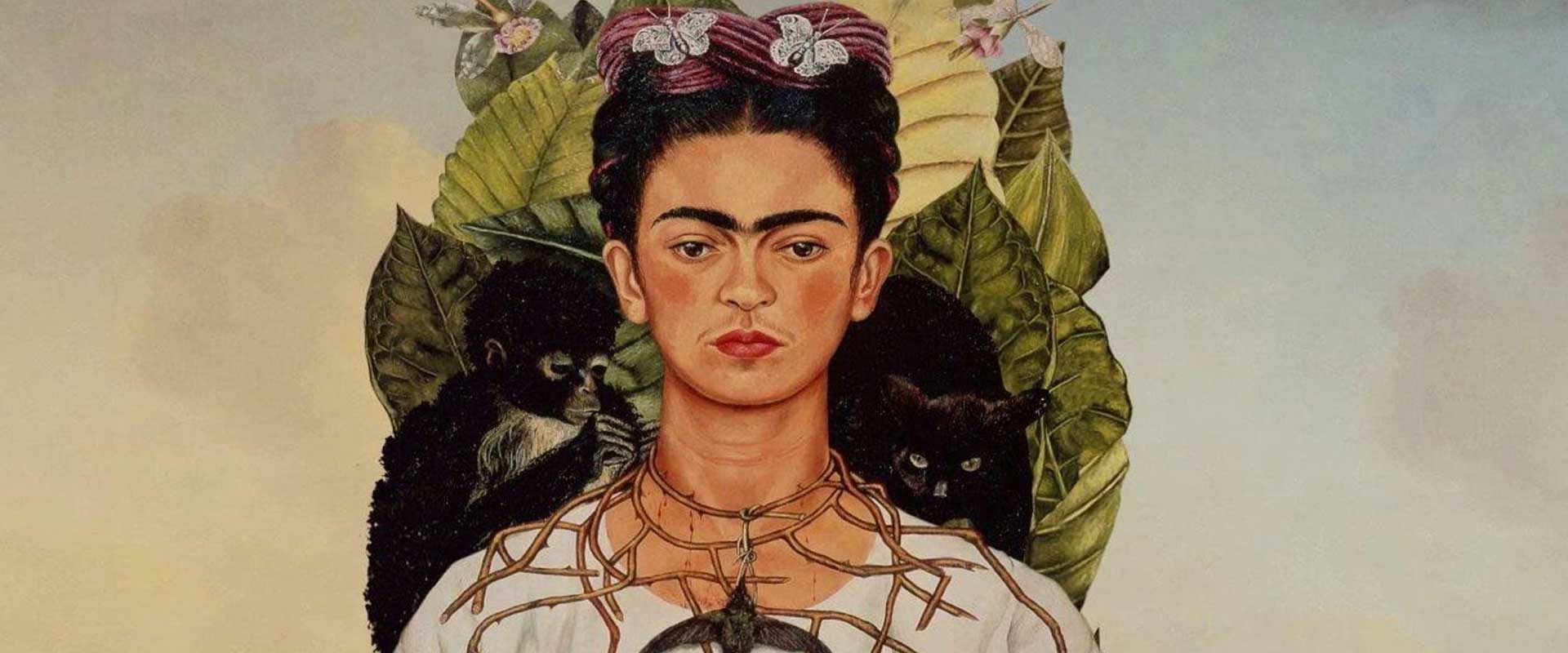Frida Kahlo’s Self-Portrait with Thorn Necklace and Hummingbird is one of the most hauntingly iconic self-portraits in modern art. Painted in 1940, during one of the most emotionally turbulent times in her life, the portrait is more than just a visual representation—it is a layered narrative of pain, identity, resilience, and Mexican symbolism. We’ll explore the story behind this powerful painting, uncover its rich symbolism, and understand how it fits into the broader context of Frida Kahlo’s life and legacy.
Context Behind the Painting
A Period of Personal Turmoil
Frida Kahlo painted this self-portrait shortly after her divorce from Diego Rivera. The dissolution of their tumultuous relationship left her emotionally devastated. During this time, Kahlo also endured severe physical pain from the lifelong injuries she suffered in a streetcar accident. This portrait was a way for her to process her pain—emotionally, physically, and spiritually—by transforming suffering into art.
The Influence of Mexican Heritage
Frida often drew from her Indigenous Mexican roots, and this painting is no exception. From her Tehuana dress to the spiritual and natural elements within the work, Kahlo’s identity as a Mexican woman is central to this piece.
Visual Breakdown and Symbolism
The Thorn Necklace
At the center of the portrait is a thorn necklace, tightly wound around her neck like a crown of thorns. This motif is often interpreted as a symbol of martyrdom, drawing parallels with the suffering of Christ. The thorns pierce her skin, and droplets of blood can be seen, underscoring the physical and emotional pain Kahlo felt at the time.
The Hummingbird
Hanging from the necklace is a lifeless black hummingbird. In Mexican folklore, the hummingbird is associated with good luck and love. However, here it appears dead—perhaps representing the death of love or lost hope. It may also symbolize Kahlo’s defiance. The black hummingbird resembles an amulet or a talisman, reflecting her attempt to reclaim power over her suffering.
The Monkeys and Cat
Behind her left shoulder sits a black cat, a common symbol of bad luck or death. On her right, a monkey tugs at the thorn necklace, tightening it further. The monkey, possibly a symbol of mischief or bondage, is often thought to represent Diego Rivera, who gifted her pet monkeys and remained a painful presence in her life even after their separation. These animals aren’t just decorative—they are metaphors for tension, danger, and emotional entrapment.
Background Flora
The lush jungle backdrop teems with large green leaves and vibrant flora, creating a stark contrast to the pain Kahlo expresses. This natural environment is also symbolic of fertility and life—another recurring theme in Kahlo’s work, especially given her own struggles with infertility.
Interpreting the Emotional Layers
Frida’s gaze in this painting is calm but intense, facing the viewer directly. Despite the visual cues of suffering, she appears composed—defiant, even. This juxtaposition suggests that Kahlo didn’t view herself solely as a victim but as a survivor. The Self-Portrait with Thorn Necklace and Hummingbird communicates the complexity of emotional pain. It blends love and loss, power and passivity, life and death—all on one canvas.
Legacy and Reception
A Globally Recognized Masterpiece
Today, this painting is considered one of Frida Kahlo’s most celebrated works. It has been featured in numerous exhibitions and continues to captivate audiences around the world. The raw emotion and layered symbolism make it a favorite among art historians, feminists, and Kahlo admirers alike. The painting currently resides at the Harry Ransom Center at the University of Texas at Austin, where it remains a highlight of their permanent collection.
Cultural and Feminist Symbol
Frida’s self-portraits—especially this one—have become emblems of feminist resilience and self-expression. The directness of her gaze, the acceptance of her suffering, and the unflinching portrayal of personal truth make Kahlo a timeless icon. In an age where identity, vulnerability, and authenticity are increasingly valued, Self-Portrait with Thorn Necklace and Hummingbird continues to resonate deeply.
Where to Discover Frida Kahlo’s Art
Frida Kahlo’s paintings, including this self-portrait, have inspired countless artists and collectors. If you’re drawn to her unique style, you can explore museum collections or add a touch of her artistic spirit to your space through curated reproductions. Browse our exclusive Frida Kahlo wall art prints to find beautifully rendered canvas prints that capture the essence of her iconic style. For more legendary artist-inspired prints, visit our artists collection, including works by Vincent van Gogh, Leonardo da Vinci, and more.
Conclusion
Self-Portrait with Thorn Necklace and Hummingbird is not just a painting—it’s a confession, a statement, and a legacy. Through it, Frida Kahlo offered the world an intimate look at her inner world, filled with suffering, strength, and symbolism. Its emotional depth and visual richness make it one of her most unforgettable works, a canvas where pain becomes poetry and self-expression becomes survival. Whether viewed through the lens of art, culture, or personal reflection, this portrait continues to captivate and inspire across generations.
FAQ
What is the meaning behind Frida Kahlo’s thorn necklace?
The thorn necklace symbolizes pain and martyrdom, echoing religious imagery while also reflecting Kahlo’s emotional suffering.
Why is there a dead hummingbird in the portrait?
The hummingbird, traditionally a symbol of love and vitality in Mexican folklore, appears dead—perhaps representing lost love or emotional despair.
What do the animals represent in the painting?
The monkey is thought to symbolize Diego Rivera, pulling the thorns tighter, while the black cat may symbolize death or looming misfortune.
Where is this painting currently located?
Frida Kahlo’s Self-Portrait with Thorn Necklace and Hummingbird is housed at the Harry Ransom Center at the University of Texas at Austin





